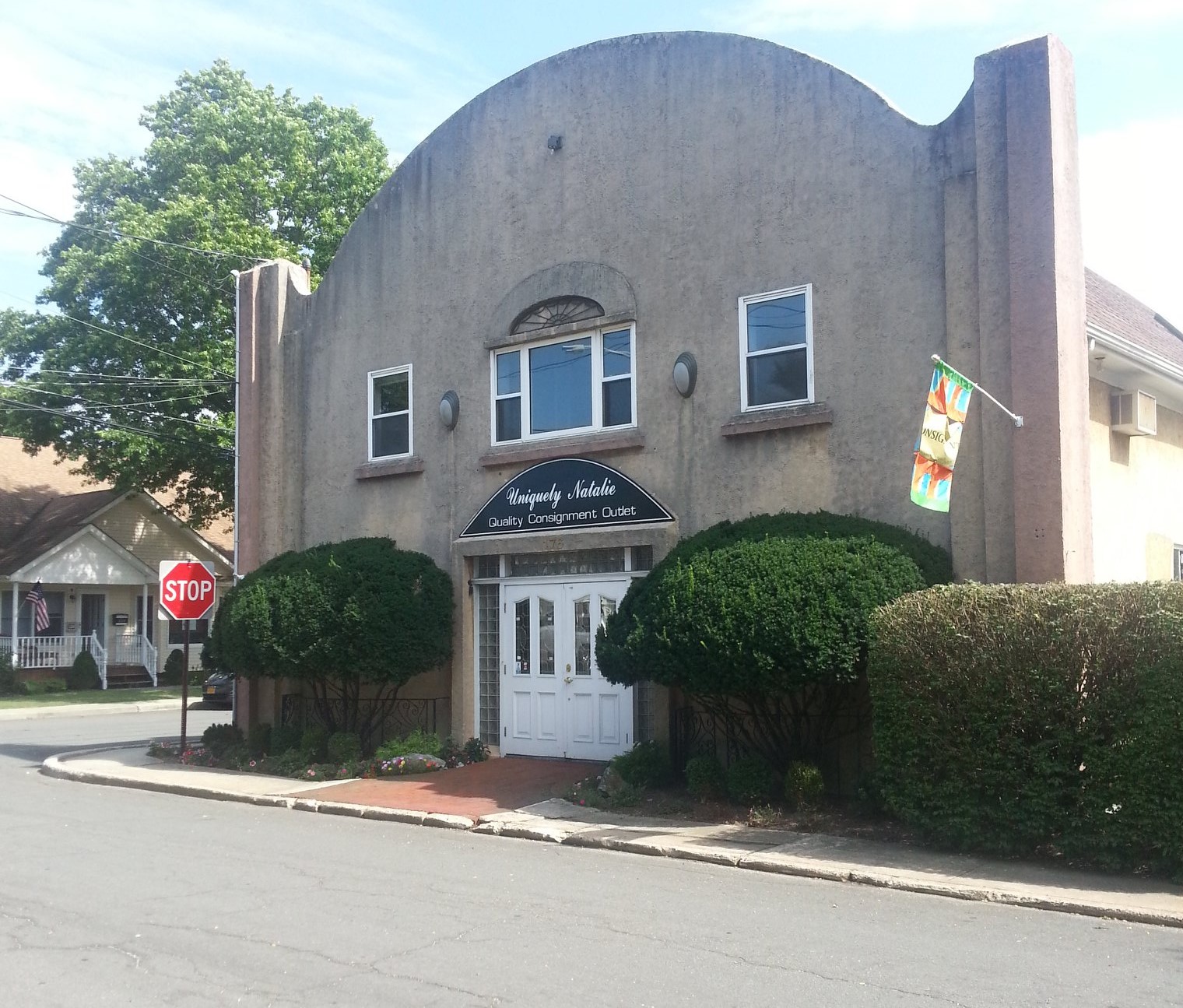(Photo: The Calderone Theatre in St. James – Credit – Celebrate St. James Facebook)
Local history is an important backbone of any community. From remembering roots to preserving architecture and traditions, stewardship of local history ensures a community’s identity will not fade into obscurity.
However, the task of preserving community artifacts is often not an easy one. Dilapidation, disaster, and even encroachment from other parties can turn the small gap between the community and its priceless heritage into a chasm of nondescript development and a loss of intrinsic identity.
Celebrate St. James, a nonprofit cultural arts organization, is looking to maintain that exact balancing act, vis-à-vis the historic Calderone Theatre.
Located in the heart of St. James, the Theatre was built in the early 1900s and is believed to have housed live stage performances before being purchased by the Calderone family, who owned a large chain of movie theatres.
Over the last century or so, the historic building has fallen into disrepair. In 1985, Natalie Weinstein, still the current landlord of the building, purchased the Calderone Theatre with the intention of not only preserving the history, but restoring it to its former glory as a playhouse. The former President of Celebrate St. James, Weinstein has worked with the group in ensuring the building remains standing and undeveloped, while also taking in grant money and donations to continue the renovation efforts.
Now, the Calderone Theatre might just get a new overhaul on top of its intended preservation in the form of green initiatives to make the building more sustainable and less of a strain on resources.
A presentation was held last week in the second floor of the theatre, where memorabilia and heirlooms are stored in the museum, to discuss the possible green renovations and the purposes of such an overhaul.
“It might pique our imaginations to think of the people who came to this building in the wake of World War I and the Depression to be enriched, entertained, and inspired,” said Weinstein. “That’s what we are continuing to do, and what we want to be able to do in a cultural art center is to feature the best of green energy initiatives and construction.”
The presentation was developed and held by Neil Rosen and Frank Dalene. Rosen is a registered architect, a LEED Fellow, Certified Passive House Consultant, Certified Energy Manager, and Certified Healthcare Facilities Manager with over forty years of experience in the design, construction, and operations of high-performance buildings. Rosen is the President of Grin Sustainability, a full-service green building consultancy that he founded in 2012. He is also an adjunct professor at the New York Institute of Technology’s School of Architecture and Design.
Frank Dalene is the President and CEO of Telemark, Inc., a construction services business that he co-founded with his brother in 1978. Telemark has been known for their superior quality, craftsmanship, and for being a national leader in energy efficiencies. Telemark is known for their completion of the world’s first certified carbon-neutral building.
“This building was built one hundred years ago, but a lot has happened since then and our consciousness about the environment has grown. We’ve become very aware of impacts that certain things have on our environment,” said Dalene. Dalene made the concept of environmental responsibility at the forefront of the presentation.
“This building is still standing here after one hundred years and what we hope to do with this project is to give this building another one hundred years worth of life,” said Rosen. “A lot of people look at first costs and try to find the least expensive building they can possibly build. We want to do better than that.”
Rosen said that energy efficiency comes from current energy costs, stating that the building is not energy efficient today since that was not the mindset of builders a century ago. Rosen said that ventilation is a large aspect of gauging a building’s air quality metrics and air changes. Through thousands of cracks in the walls, air escapes from outside in and vice versa. While outside air can ventilate the interior of a building, releasing air by large quantities over short periods of time can lead to increased heating and cooling costs.
Rosen said the goal is to get the Calderone Theatre at a platinum-level rating, according to the U.S. Green Building Council (USGBC), the highest ranking a building can obtain based on a point system that, according to Rosen, is a “very challenging place to go.”
Rosen said that the building already has some decent basis points since the building itself is being recycled. Furthermore, a downstairs garden with irrigation supplied by rainwater will also help the building’s “green” score increase.
Solar panels are also a priority of the initiative. Rosen said that some current aspects of the roof can be removed since they have become obsolete, making more room for panels. The gas line into the building is also slated for removal. Rosen also mentioned the importance of a good air conditioning system, stressing that the initial cost of an efficient system is far worth the price long-term than a cheaper one.
“We have one of the best, if not the best, utility incentive programs on the planet here on Long Island for green buildings,” said Rosen.
“PSE&G helps with all of this and we will be hitting them up for everything they have. When you pay your electric bill, you pay a service benefit charge. That goes into an account and those who get incentives get paid out of that account. The utility isn’t giving you any money, they’re giving you your money back.”
Rosen also discussed the design of a building that can withstand outages and sustain itself for periods of time, namely regarding battery backups fed by solar panels, allowing the Calderone Theatre to further live up to its passive-house potential.
Long Island’s precarious position on a sole-source aquifer was also discussed during the presentation, with Rosen mentioning the use of rainwater “where we can” and “very efficient plumbing fixtures.”
Rosen also made a case for recycling buildings with an interesting statistic: “Of all the buildings that are expected to be in existence in 2050, 80% of them exist today.”
“I want to keep some of them because we can’t afford to lose the history of them,” said Rosen.
The question also comes down to the Calderone Theatre’s status as a historic building. To qualify for historic building status, certain metrics must be maintained, but many aspects of the character and design of the building must also be kept in place. The importance of historic status allows more grant money to flow from other levels of government, but it creates a balancing act scenario between the futuristic renovations and retaining the classic identity of the theatre. Federal tax credits for historic buildings allow for renovations, but the Calderone Theatre would need to remain in a certain part of the Venn Diagram to renovate in such a way that it can obtain the funds to do so.
The Calderone Theatre will rely on donations and grant money in order to complete the renovations in its efforts to remain a historic landmark, while also becoming a green building. Trajectory of the project relies entirely on funds that flow to the Theatre.
The presentation was attended by Smithtown Supervisor Ed Wehrheim (R-Kings Park) and Senator Mario Mattera (R-St. James), both of whom share the interest of preserving historical landmarks and utilizing valuable green initiatives.
Supervisor Wehrheim’s presence was noted by Weinstein and members of Celebrate St. James, who recognize him and the Town as valuable partners in their initiative. The title of the Theatre will be transferred to the Town when it is most advantageous during the renovation of the property.
“I found the presentation to be very interesting and very informative,” said Supervisor Wehrheim. “Working towards a sustainable building will help the organization Celebrate St. James economically, but it also carves out a niche for the building as the first of its kind.”
“The efforts by Celebrate St. James to preserve the Calderone Theatre as an historic component of the local community while also prioritizing the use of green initiatives are so important,” said Senator Mattera. “As the Ranking Republican Senator on the Senate’s Labor Committee, I am aware of the importance of utilizing new energy sources to protect our environment and know that the organization’s efforts to find reliable, clean energy sources will benefit all our residents. Led by President Doris Meyer and Founder Natalie Weinstein, Celebrate St. James is both preserving our collective past while helping to move us towards a better future and that is greatly appreciated.”
The Calderone Theatre and the Celebrate St. James Community Cultural Arts Center are located at 176 Second Street in St. James. Celebrate St. James can be reached at 631-686-5644 or at [email protected].






